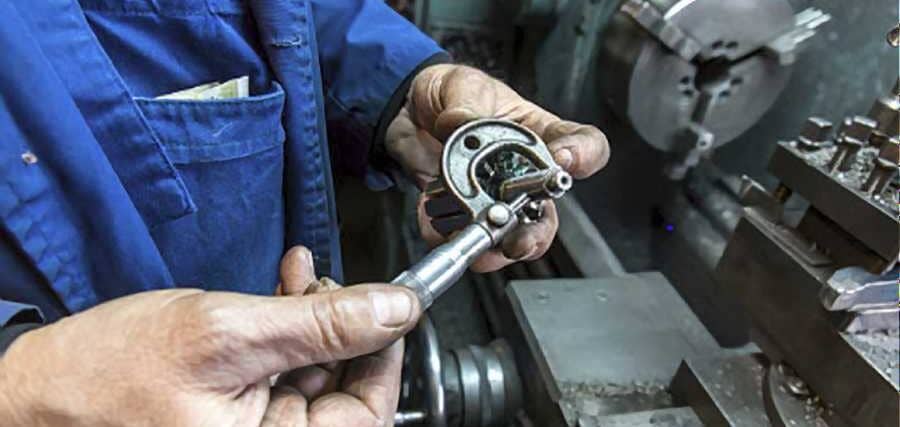Disclaimer: As an Amazon affiliate, I may earn a small percentage from qualifying purchases. This is at no extra cost to you. Learn more here.
If you are interested in mini metal turning lathes but do not know much about cutting tools, how to use them and lathe cutting tool setup, then this piece of writing is for you.
As you read through the article, you will learn to master the various tips and tricks of setting up the mother of all machines- A lathe cutting machine!
It is a versatile instrument in terms of performance. Therefore, it is necessary to know how appropriately to handle it.
This thing is used for a diverse set of operations like turning, tapering, knurling, form turning, cutting, facing, screw cutting, dulling, boring, spinning, grinding, polishing, etc.
All of it can be done by simply changing the cutting tool that is fed either parallelly or from right angles to the workpiece, while the spindle rotates simultaneously.
The Step by Step Setup Process

One of the crucial factors to consider while setting the machine up is accurately adjusting the height of the turning tool relative to the centerline of the lathe. This, in turn, depends on;
1. Tool life
2. Surface finish
3. Cutting efficiency
Below are our 7 of the instructions to assist you regarding how to set up a lathe cutting tool :
Step 1: Ensure Safety!
Because this machinery involves a lot of cutting and grinding, the first and foremost thing to take into consideration is the operator’s safety to prevent any injuries.
In order to reduce the possibilities of any unwanted accident, all actions must be carried out while the lathe is switched off.
Yes, it as simple as that! Here is an outstanding beginner’s guide for metal lathe lovers where we have discussed the safety issue more elaborately, or you can check this general guide to know the basics of lathe machine problems and their solutions too.
Step 2: Get the Right Tool
Apart from the various cutting tools, you will also need a simple 6-inch scale. The steel ruler is to make sure there is approximately the same length as the ruler above and below the centerline.
Step 3: Mount the Workpiece into the Lathe
Once the workpiece is adjusted on the chuck as mentioned, rearrange the tailstock spindle until it stretches out about 3 inches on the far side of the tailstock.
Relax the tailstock lever. Position the terminal end of the piece in the chuck; glide the tailstock up to the time it supports the other tail end of the workpiece. Now, carefully secure the tailstock clamp.
Once the workpiece is loaded into the lathe machine, gradually tighten the chuck to the point where it does not move anymore. Make sure the line is running right. If not, then remove the center, clean the surface, and replace it.
You can read this article too where we talked about lathe chuck mounting methods.
Step 4: Install the Cutter Tool
Tool holders are used to bearing the lathe cutting tools. At first, clean the holder in order to prevent a false setup. Then tighten the bolts. An important point to take care of would be to make sure the tip of the tool is in close proximity to the tool holder.
This will help to reduce tool damage. Otherwise, it might affect the entire process and ruin the workpiece.
Step 5: Set the Ruler in Position
Position the ruler in the middle of the stock and the tool.
The tool will be in the center, while the ruler will be positioned vertically. Similarly, the tool will be up higher when the ruler tilts towards the front and lower when the ruler tilts backward.
In order to fix the height of the tool, adjust the height wheel to bring it back to the preferred position.
Step 6: Take A Test Cut
Take a light facing cut. The accurate and precise set up should create a smooth facing cut without any defects.
Step 7: Final adjustments
If facing cut was all you intended to do, then your job was done there. However, if you wish to do some more, you have to take the tool out and set it up again.
The set will preserve all the settings that you made previously! Repeat the same process for all the tools!
For convenience, it is advised to get the multiple holders set and just drop them into the position. This will save you a lot of time and cumbersome process of setting it up over and over again.
Conclusion
As you can see, lathe cutting tool setup isn’t a challenging task. All you need to do is follow the instructions correctly, and you’ll be ok.
But if you still have some questions, please let us know in the comments section.
